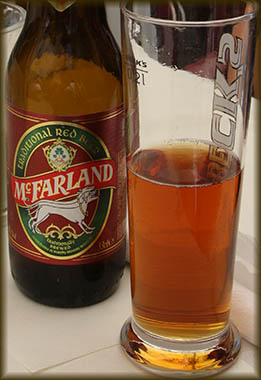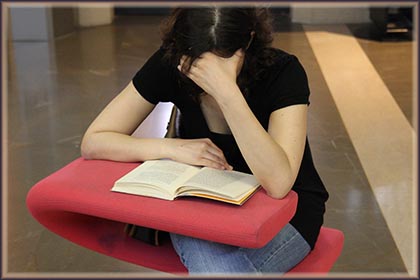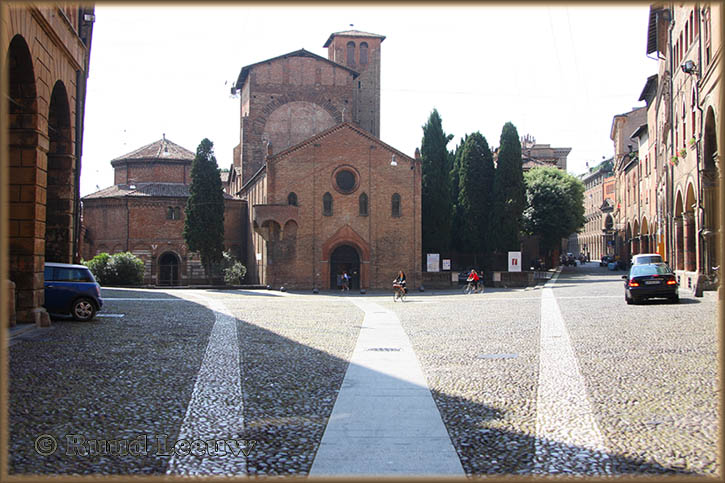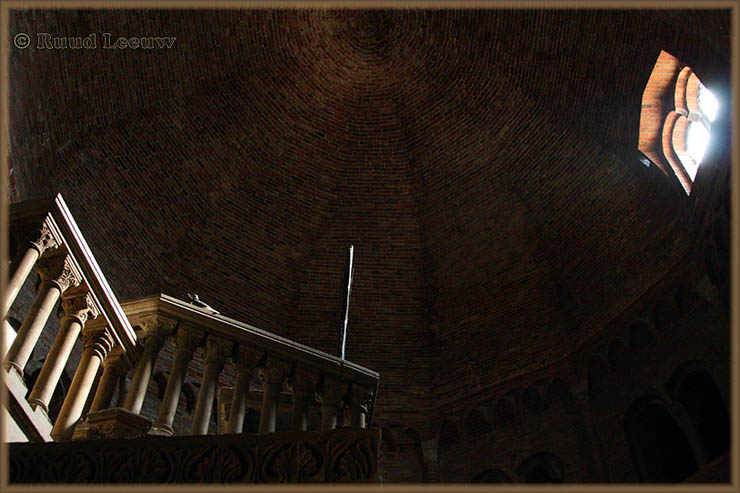 Photos © Ruud Leeuw
Photos © Ruud Leeuw Photos © Ruud Leeuw
Photos © Ruud Leeuw
In May we drove down to Italy and visited some cities in this beautiful country. In Sep.2008 we undertook a somilar trip, but on this occasion we visited different cities. Click on the thumbnail images to view a larger image |
 |

 I think we saw this castle near Sillian, Austria. Note that parasailer overhead. |
 Without any change of scenery, we suddenly arrived at the Italian border. |
 |
 |
| We continued on the 'Felber-tauern Strasse' in East Tirol (Italy), taking our directions away from the main highways. We noticed people on mountain bikes were out in full force. And motorcycles too. With the sun shining down on us and the mountains around us still wearing a remarkable amount of snow, it was bliss driving this route. We stopped at the Lago di Landro, a beautiful little lake. That photo showing the motorcycle was taken from the exact same spot as the photo on the right: you'll understand why nobody was seen swimming in that lake! |
| Heading south for Padova, we found little in terms of services on the autostrada. So we took an exit, quite randomly, and ended up in 'deserted' Castellavazzo. But we did find a restaurant here open for refreshments and I rediscovered my liking for cold Lemon Soda's! However, I don't think I will ever get used to those primitive toilets they have here in Italy, very third-world-like in my opinion. Sorry, no photos to illustrate this further! |
 We arrived in Padova (a.k.a. Padua, Wikipedia) by the end of the afternoon. We found lodgings at the Casa del Pellegrino, which is in fact on the doorstep of the Basilica di Sant'Antonio and nearby the Botanical Garden of the University.
We arrived in Padova (a.k.a. Padua, Wikipedia) by the end of the afternoon. We found lodgings at the Casa del Pellegrino, which is in fact on the doorstep of the Basilica di Sant'Antonio and nearby the Botanical Garden of the University.We did not visit the Basilica as all kind of procedures regarding handbaggage, photography, etc spoiled our appetite for this. |
The photos immediately above and below, the sun dial, were taken by me during a random ramble. This stop at Padova was basically to get an impression (sorry, not as nice as Bologna..) for deciding on a future visit.
|
The Padua Cathedral; it is the third edifice built in the same site. The first one was erected after the Edict of Milan in 313 and destroyed by an earthquake on January 3, 1117. I could not visit it, probably because it was sunday and in use. The cathedral is closed in by houses, loosing some of its grandeur. |
At the Palazzo della Ragione (Piazza delle Erbe?) people were making music, the little girl obviously enjoying the rythm! Street artists entertained the public with their antics. A lively scene I gladly investigate further on a future visit. |

The most famous of the Paduan churches is the Basilica di Sant'Antonio da Padova, locally simply known as "Il Santo". The bones of the saint rest in a chapel richly ornamented with carved marbles, the work of various artists, among them Sansovino and Falconetto. The basilica was begun about the year 1230 and completed in the following century. Tradition says that the building was designed by Nicola Pisano. It is covered by seven cupolas, two of them pyramidal. There are also four beautiful cloisters to visit. Sant'Antonio is treated as Vatican territory. [Wikipedia] |
 The Orto Botanico di Padova is the world's oldest academic botanical garden which is still in its original location. (Officially, the oldest university botanical garden is the Orto botanico di Pisa, which was founded in 1544; however, that garden was relocated twice and has only occupied its current, and now-permanent, location since 1591.) It was founded in 1545. The garden, affiliated with the University of Padua, currently covers roughly 22,000 square meters, and is known for its special collections and historical design. A circular wall enclosure was built to protect the garden from the frequent night thefts which occurred in spite of severe penalties (fines, prison, exile!). The Botanical Garden was steadily enriched with plants from all over the world, particularly from the countries that participated in trade with Venice. In 1997, it was listed by UNESCO as a World Heritage Site. [Wikipedia] |
Next: VENICE !
 The Rialto Bridge and a gondola.... so Venezia...! See my webpage on this visit HERE... |
| Next stop: Ferrara. Ferrara is a city in Emilia-Romagna, northern Italy; it is the capital of the Province of Ferrara. The town has broad streets and numerous palaces dating from the 14th century and 15th century, when it hosted the court of the house of Este. For its beauty and cultural importance it has been qualified by UNESCO as a World Heritage Site. During the reign of Ercole I, one of the most significant patrons of the arts in late 15th and early 16th century Italy after the Medici, Ferrara grew into a cultural center, renowned for music as well as for visual arts. Alfonso I, son of Ercole, was an important patron of the arts; his preference for instrumental music resulted in Ferrara becoming an important center of composition for the lute. Alfonso married the notorious Lucrezia Borgia, and continued the war with Venice with success. [Wikipedia] Our interests, during this brief visit, were the castle and the cathedral. And a place to have lunch.. First we parked the car and followed the medieval wall surrounding the old city. |
;
 Castle Estense in the distance (two towers), seen from the large square where one finds the Cathedral too. |
| Left: Basilica Cattedrale di San Giorgio, the Ferrara Cathedral. It is located in the city centre, not far from the Palazzo Comunale and the famous Castello Estense and is connected to the Archbishop's Palace by a covered passage. Construction of the basilica was started in the 12th century. [Wikipedia] |
|
 Fortunately there are other photo opportunities too, to avoid this report to be limited to classical buildings! |
| However, one should have a look inside this cathedral. We were just in time: I always forget the hours everybody close shop in Italy (around 13:00 - 15:30) including churches! |
.  |
 |
 |
  The pink/white marble tower of the cathedral, thought to be the work of Leon Battista Alberti, was never finished. The side of the cathedral has small shops. |
|
 The Lonely Planet recommended this restaurant and we were desperately seeking a place to take the load of our feet and get in the shade, out of that burning midday sun! |
 'Birra Rosso' or 'Scottish Beer' (Irish more like!), ohhh so lovely!!! The Italians become a little more international ! |
 Lovely too! |
| We arrive at our destination: BOLOGNA. First we have a look again (see also my 2008 report) at the Piazza Maggiore. Artists play music, 'young and old' enjoy their work. |
|
After one has had a look at Piazza Maggiore, one simply has to have look at Due Torre! Some forty of these towers survive, some leaning at an obvious angle. The above photo (source) shows the 11th century panorama of Bologna. The towers were for defense of the city but also a matter of prestige between families. [Wikipedia] |
 This shop featured an immense selection of the most wonderful & tasty icecream on this earth!! |
| For those who desire a more hearty taste.. sausages! |
 San Pietro the cathedral ('Duomo'). We had arrived here the day before Ascension Day and a considerable crowd had gathered. |
BOLOGNA is the capital city of Emilia-Romagna, in the Po Valley of northern Italy. The city lies between the Po River and the Apennine Mountains. |
|
 |
| We were shown inside the library, Biblioteca Salia Borsa on the Piazza Nettuno. You can see what they have done to make the medieval foundations visible! |
 |
 |
Smart seats!  |
| Meanwhile, outside there is plenty to enjoy too... Like these neglected frescoes or the filming that was being done on the Piazza Verdi. |
 We had a wonderful stay in the Albergo Centrale Hotel, which is located very near to the Piazza Maggiore. This hotel offers a nice level of accommodation including airconditioning and an excellent breakfast.
We had a wonderful stay in the Albergo Centrale Hotel, which is located very near to the Piazza Maggiore. This hotel offers a nice level of accommodation including airconditioning and an excellent breakfast.Tripadvisor.com |
Bologna's porticoes offer 40 kilometers of covered walkways, to discover and enjoy. It is said you don't need an umbrella in this town as you'll find your way by the porticoes, sheltered from the rain! Porticoes are the arteries of the city, people hurry along or they may be deserted and you can enjoy the play of light. In Bologna's old city you'll see porticoes or marvelous arches built over centuries, from 1200 to 1900; all the styles and decorations, to ramble or roam at your leisure. |
 |

We were advised to visit the Santo Stefano Church in Bologna. It is a complex of religious edifices in the city and locally known as Sette Chiese ('Seven Churches'). It proofed to be excellent advise! According to tradition, it was built by Saint Petronius, who was bishop of the city during the 5th century, over a temple of the goddess Isis. The church of St. John the Baptist (or of the Holy Crucifix) dates from the 8th century, while that of the Holy Sepulchre from the 5th (renovated in the 12th century), as well as that of San Vitale ed Agricola (renovated in the 8th and 11th centuries). A 13th century portico known as "Pilatus' court" connects the other buildings to the church of the Holy Trinity (13th century). It is absolutely fascinating to step from one church into another, across centuries, and then find oneself in an open area or dimly lit hallway also exuding history, half expecting the medieval walls to murmur their mystic tales, releasing hidden details of secrets, pain, plots or ploys.. |
 |

|